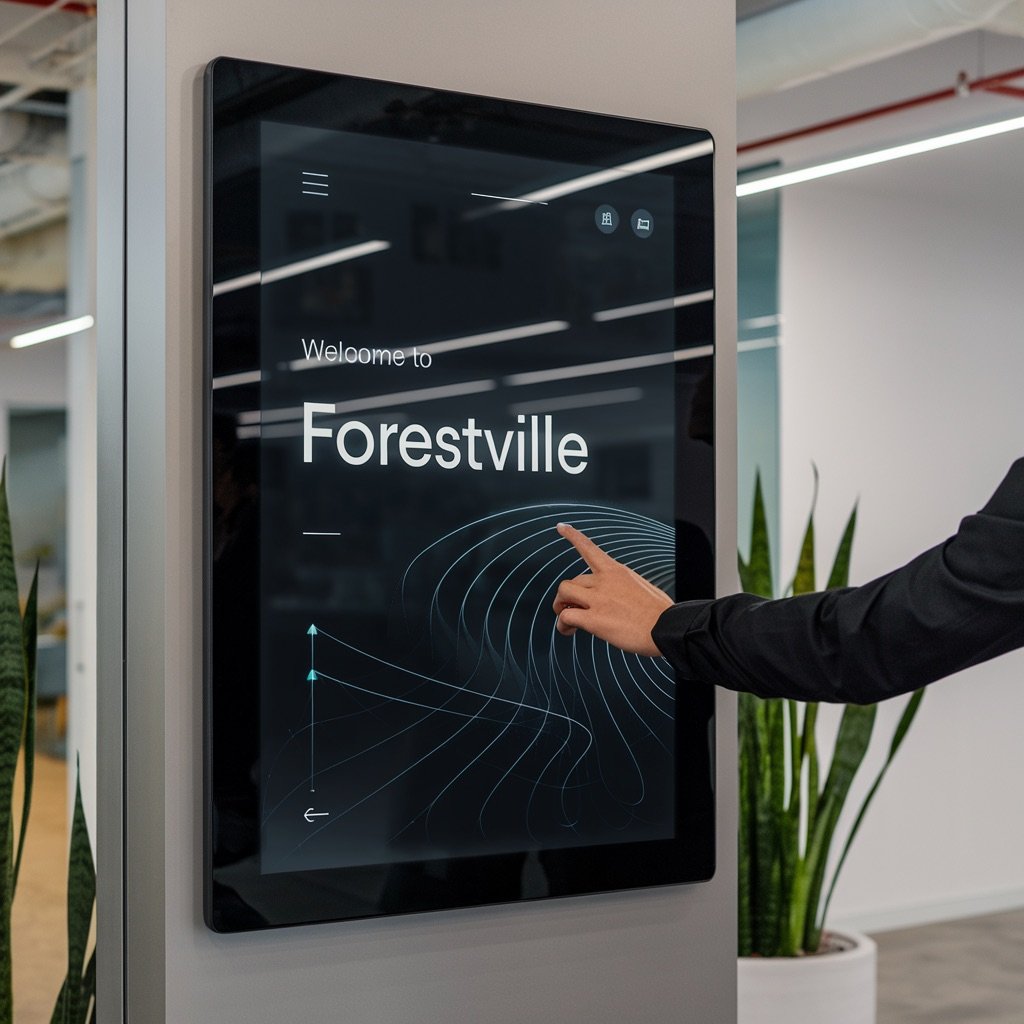Tips for Incorporating Interactive Elements into Your Sign Designs
In today's fast-paced world, traditional signage often struggles to capture attention. With visual clutter everywhere, businesses are now turning to interactive sign designs to create engaging, memorable experiences. By integrating interactive elements, static signs can transform into dynamic communication tools that resonate with audiences. This guide will walk you through how to incorporate these elements into your sign designs, discuss the benefits, and provide practical tips for maximizing their impact.
Understanding the Value of Interactive Signage
Interactive signage isn’t just a passing trend; it's a powerful tool for boosting user engagement, gathering valuable data, and reinforcing your brand identity. By encouraging active participation, interactive signs shift the experience from passive viewing to engaging interaction, leading to higher retention rates and more meaningful connections with your audience.
Enhancing User Engagement
Interactive signs invite users to engage directly with the content, whether through touchscreens, motion sensors, or other features. This interaction increases the likelihood of users remembering your message, making the sign more effective.
Providing Real-Time Feedback
Interactive elements allow businesses to collect real-time data on user interactions, offering insights into customer preferences and behaviors. This information is invaluable for refining marketing strategies and improving the overall customer experience.
Strengthening Brand Identity
By incorporating interactive elements, you can showcase your brand's innovation and creativity. This modern approach to signage creates a memorable experience that aligns with your brand values and identity.
Types of Interactive Elements for Signage
When designing interactive signs, various elements can be employed to enhance user experience. The right choice depends on the sign’s purpose, the target audience, and its environment.
Touchscreens
Touchscreens are among the most popular interactive elements. They allow users to navigate content, select options, and access information at their own pace, making them ideal for wayfinding, informational kiosks, and product displays.
Motion Sensors
Motion sensors detect movement near the sign and trigger responses, such as changing images or playing sounds. This type of interaction is highly engaging and can draw attention to promotions or new products in retail spaces.
Augmented Reality (AR)
AR adds a digital layer to the physical world, allowing users to interact with virtual elements overlaid on the sign. AR is perfect for immersive experiences like trying on virtual clothing or visualizing products in a real-world setting.
QR Codes and NFC Tags
QR codes and NFC tags enable users to interact with signs via their smartphones. Scanning a code or tapping a phone can direct users to additional information, videos, or websites, offering a simple yet effective way to engage with your content.
Social Media Integration
Incorporating live social media feeds or hashtags encourages users to interact with the sign and share their experiences online. This not only increases engagement but also amplifies the sign’s reach through social media channels.
Gamification
Adding game-like elements such as quizzes or challenges can create a fun and engaging experience. Gamification is especially effective in retail and promotional settings, where it can drive interaction and boost brand loyalty.
Best Practices for Designing Interactive Signs
To ensure your interactive signs are effective and user-friendly, follow these best practices in design and implementation.
Prioritize User Experience
The primary goal of interactive signage is to enhance the user experience. Design should be intuitive, with clear instructions and easy-to-use interfaces. The interaction should feel natural and seamless, ensuring users are not confused or frustrated.
Keep It Simple
While it might be tempting to add multiple interactive features, it's crucial to avoid overcomplicating the design. Focus on a few key interactions that align with the sign’s purpose and audience. A cluttered sign can overwhelm users and detract from the overall experience.
Use High-Quality Visuals
Interactive signs should be visually appealing to attract users. High-quality images, videos, and animations can create a polished, professional look. Ensure that the visuals are consistent with your brand identity and effectively convey your message.
Optimize for Different Environments
Consider where the sign will be displayed and optimize the design accordingly. Outdoor signs should be weatherproof and readable in different lighting conditions, while signs in busy areas should capture attention quickly and offer simple, fast interactions.
Test and Iterate
Before rolling out your interactive signage, test it with real users to identify any potential issues or areas for improvement. Gather feedback and make necessary adjustments to enhance the user experience. Iterative testing ensures that the final product is as effective as possible.
Integrate Analytics
Include analytics tools to track how users interact with your sign. This data can provide valuable insights into what works and what doesn’t, allowing you to refine your approach over time. Metrics such as engagement rates and interaction times are particularly useful.
Challenges of Interactive Sign Design and How to Overcome Them
Designing interactive signs comes with its own set of challenges, from technical issues to user adoption. Understanding these challenges and how to address them is key to creating successful interactive signage.
Technical Complexity
Interactive signs often require complex technology, such as touchscreens or AR. Ensuring all components work seamlessly together can be challenging. Collaborate with experienced technicians and use reliable, high-quality equipment to minimize technical issues.
User Adoption
Some users may be hesitant to interact with signs, especially if they are unfamiliar with the technology. To encourage adoption, make the interaction intuitive and inviting. Clear instructions, user-friendly interfaces, and engaging content can help overcome this barrier.
Cost Considerations
Interactive signs can be more expensive to design, produce, and maintain than traditional signage. To justify the investment, focus on strategic placements where the interactive elements will deliver the most value.
Maintenance and Updates
Interactive signs require regular maintenance and updates to ensure they function correctly and stay relevant. Plan for ongoing support and budget for periodic updates to keep the content fresh and engaging.
Future Trends in Interactive Signage
The field of interactive signage is continuously evolving, with new technologies and trends emerging that promise to enhance user experiences further. Staying informed about these trends can help you stay ahead of the competition.
AI and Personalization
Artificial Intelligence (AI) is enabling more personalized and responsive interactions. AI can analyze user behavior in real-time, delivering tailored content and recommendations that enhance the user experience.
Voice Interaction
Voice-activated signage is becoming increasingly popular, allowing users to interact with signs through spoken commands. This hands-free interaction is particularly useful in settings where users may have limited physical interaction, such as medical facilities or retail stores.
Advanced AR Experiences
As AR technology continues to improve, we can expect more sophisticated and immersive experiences in signage. Advanced AR will allow users to interact with digital content in even more meaningful ways, blurring the lines between the physical and digital worlds.
Sustainable and Eco-Friendly Designs
Sustainability is becoming a key consideration in sign design, with more emphasis on using eco-friendly materials and energy-efficient technologies. Interactive signs that align with green initiatives appeal to environmentally conscious consumers and help reduce environmental impact.
Integration with IoT
The Internet of Things (IoT) is enabling smarter, more connected signage. IoT-integrated signs can interact with other devices, collect data, and offer highly customized experiences. For example, a sign could adjust its content based on the weather or traffic conditions.
Practical Examples of Interactive Signage
To illustrate the potential of interactive signage, here are a few real-world examples where these elements have been successfully incorporated into sign designs.
Interactive Wayfinding in Shopping Malls
Large shopping malls now use interactive kiosks with touchscreens that allow visitors to search for stores, view maps, and get directions. These signs enhance the visitor experience by making navigation easier and more intuitive.
AR-Enhanced Billboards
Some brands have experimented with AR billboards that allow users to interact with the sign through their smartphones. For example, an AR billboard for a car company might let users visualize different car models in their driveways, providing an immersive experience.
Gamified Retail Displays
Retail stores often use interactive displays that incorporate gamification elements to engage shoppers. For example, a shoe store might feature a game where customers can “race” to find the right shoe size, with winners receiving discounts or prizes.
QR Code Campaigns
QR code campaigns on signs have been used effectively in various industries, from restaurants offering digital menus to museums providing interactive exhibit guides. These codes make it easy for users to access additional content without requiring complex technology.
FAQs about Interactive Sign Design
What are the most common types of interactive elements in signage?
Touchscreens, motion sensors, augmented reality (AR), QR codes, NFC tags, and social media integration are among the most common interactive elements.
How can interactive signage benefit my business?
Interactive signage can increase user engagement, provide valuable data, enhance brand identity, and improve the overall customer experience. It can also drive sales and increase traffic to online platforms.
What are the main challenges of incorporating interactive elements into signs?
Challenges include technical complexity, user adoption, cost, and maintenance. However, these can be managed with careful planning, reliable technology, and a focus on user-friendly design.
How do I ensure my interactive sign is user-friendly?
Prioritize simplicity and clarity in the design. Provide clear instructions, use intuitive interfaces, and test the sign with real users to gather feedback and make improvements.
Are there affordable options for creating interactive signs?
Yes, there are cost-effective ways to create interactive signs, such as using QR codes or NFC tags, which require minimal investment but can offer significant engagement benefits.
What future trends should I watch for in interactive signage?
Key trends include the integration of AI, voice interaction, advanced AR experiences, sustainable designs, and IoT connectivity, all of which are set to revolutionize interactive signage.
Conclusion
Incorporating interactive elements into your sign designs can significantly enhance user engagement, improve communication effectiveness, and strengthen your brand presence. By understanding the types of interactive features available, following best practices, and staying ahead of emerging trends, you can create impactful, memorable signage that stands out in any environment.

